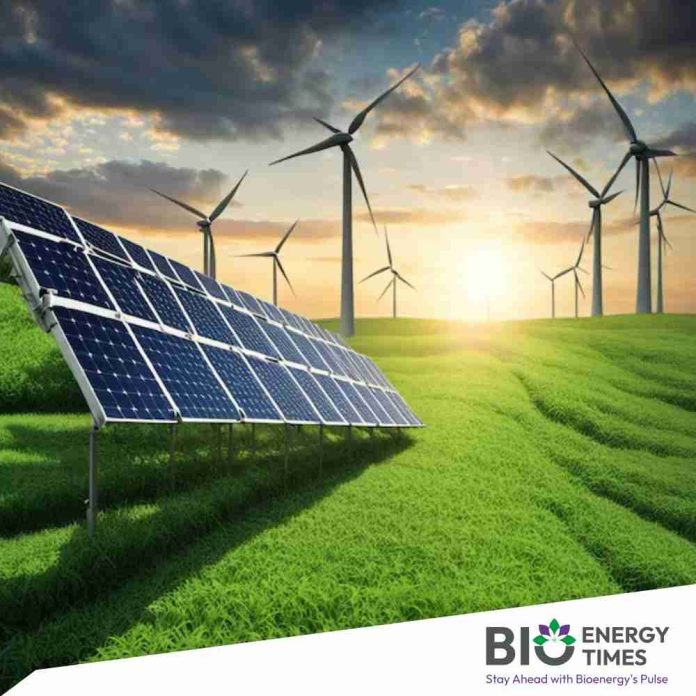As India aims to become a developed nation with a $30 trillion economy by 2047, the country faces a formidable challenge: meeting a nearly threefold surge in energy demand. National energy requirements are projected to rise from around 10,500 TWh today to 28,000 TWh by 2047, critical to powering economic growth while aligning with the global climate agenda and India’s net-zero target by 2070.
With the energy sector accounting for roughly 75% of India’s emissions, balancing rapid development with environmental responsibility is paramount. To address this, the Department of Atomic Energy (DAE) is leading discussions on energy, environment, and climate, focusing on clear, actionable goals to ensure sustainable growth. The strategy emphasizes a diversified energy mix, including solar and wind, biomass, run-of-river hydro, coal with carbon capture, utilization and storage (CCUS), and a significant scale-up of nuclear power as a reliable, zero-emission baseload.
Nuclear Energy at the Core
DAE is positioned as a key enabler, targeting 100 GW of nuclear capacity by 2047. Its mandate spans nuclear power generation, research reactor operation, radioisotope and radiopharmaceutical production, and societal applications of radiation technology in healthcare, food security, and waste management, delivered through its six research centres, five PSUs, three industrial organizations, eleven aided institutions, and three service organizations.
India’s nuclear roadmap envisions large indigenous reactors, international collaborations, small modular reactors (SMRs), and advanced technologies such as fast breeder reactors and thorium-based fuels. Achieving the 100 GW target will require comprehensive policy reforms, a robust domestic manufacturing ecosystem, and mission-mode implementation across the nuclear value chain.
“The objective is clear: shorten the distance from the laboratory to field deployment and from prototype to reliable public solution,” said Jitendra Singh, Union Minister of State (Independent Charge) for Science & Technology.
DAE Secretary Dr. Ajit Kumar Mohanty emphasized the shift toward a clean energy mix to expand national generation capacity and steadily reduce emissions to reach net-zero by 2070.
Recent Progress
Over the past decade, India’s nuclear electricity generation has grown by 60%, with installed capacity rising 71% to 8,880 MW across 25 reactors. Operating reactors have maintained capacity and availability factors above 80% over the last five years, with continuous operation beyond one year recorded 52 times. Notable recent additions include KKNPP-1 & 2 (VVERs), and three indigenous 700 MWe PHWRs—KAPP-3 (2023), KAPS-4 (2024), and RAPP-7 (2025). An additional 13,100 MWe is under construction.
Policy reforms include the Indian Nuclear Insurance Pool, amendments to the Atomic Energy Act, and public-sector joint ventures for faster capacity expansion. The ASHVINI JV (NPCIL-NTPC) has received approval for 4×700 MWe PHWRs at Mahi Banswara, with foundation stone laid in September 2025. NPCIL has also invited Indian industry participation for 220 MWe Bharat Small Reactors targeting decarbonization of hard-to-abate sectors. The Nuclear Energy Mission has earmarked ₹20,000 crore for five SMRs by 2033, supported by legislative amendments enabling private sector involvement.
Research and Societal Applications
DAE has made significant strides in basic and applied research. APSARA-U, a 2 MWth research reactor, achieved criticality in 2018, while the Low Energy High Intensity Proton Accelerator (LEHIPA) reached 20 MeV. Medical cyclotrons (Cyclone-30) are operational, and the MACE telescope has been installed in Hanle.
In reprocessing and radioisotopes, the Demonstration Fast Reactor Fuel Reprocessing Plant (DFRP) became operational in 2024, and a Molybdenum-99 plant was dedicated in 2023. Production of rare-earth metals, Sm-Co permanent magnets, and radiation-assisted food preservation technologies (KRUSHAK) has expanded, including exporting 2,500 tonnes of radiation-treated mangoes to the U.S. in 2023. Advanced semiconductor materials and secure EVM/VVPAT production further showcase DAE’s technological contributions. Cancer care infrastructure has expanded with the National Cancer Grid reaching 370 members, treating ~125,000 new patients annually.
ESTIC-2025 and Future Roadmap
At ESTIC-2025, deliberations will focus on a five-pillar strategy for a balanced energy future:
Solar and wind – targeting ~10,500 TWh by 2047
Biomass – ~3,000 TWh
Run-of-river hydro – ~2,000 TWh
Coal with CCUS – ~10,000 TWh as a zero-emission bridge
Nuclear – scaled as dependable baseload (~100 GW by 2047)
Immediate priorities include maintaining high capacity factors for operating reactors, progressing 700 MWe PHWRs and joint venture projects, advancing SMR deployment, deepening domestic manufacture of nuclear-grade components, and expanding societal applications such as radioisotopes, food, water, and environmental technologies.
This systematic, project-by-project approach aligns directly with India’s Viksit Bharat 2047 vision, combining sustainable innovation, technological advancement, and societal empowerment.
















